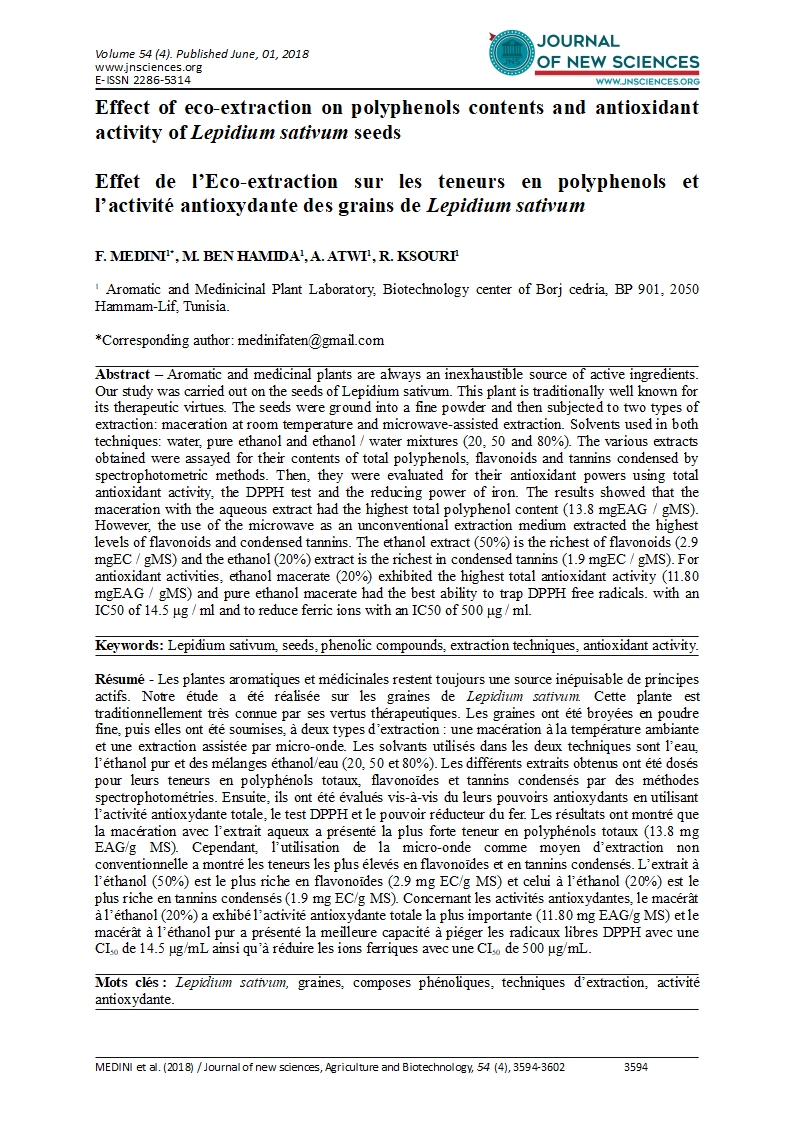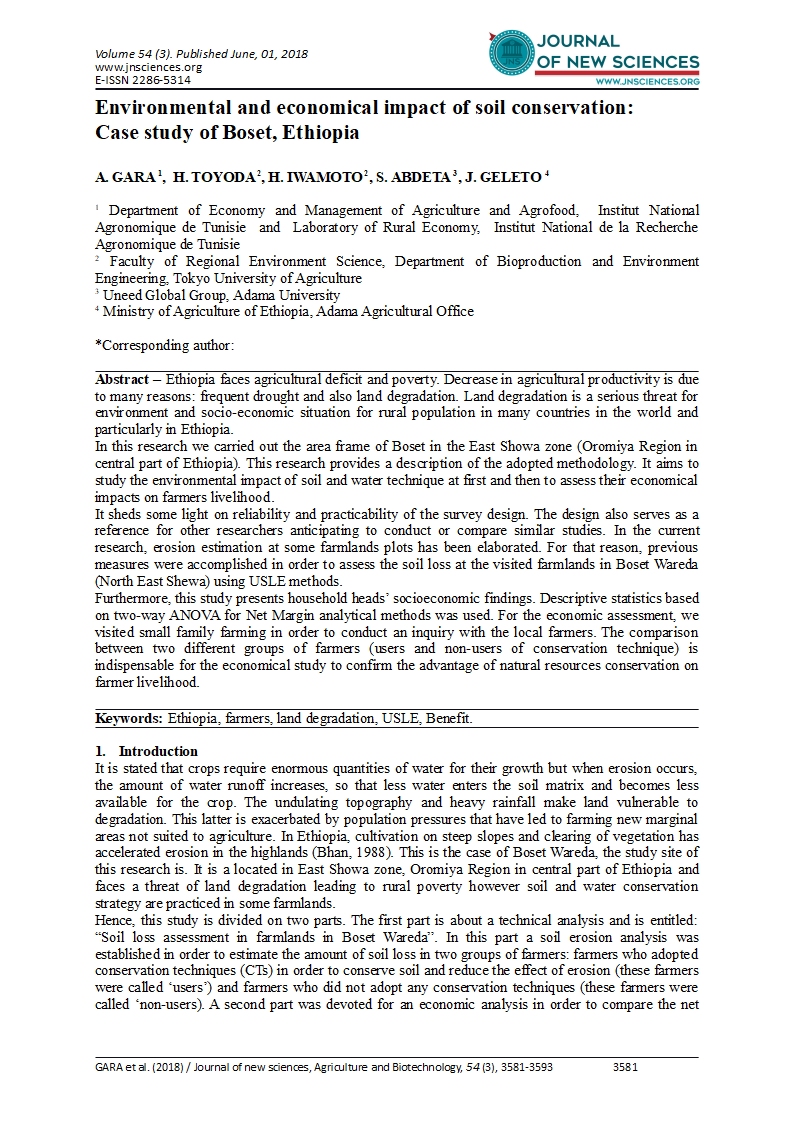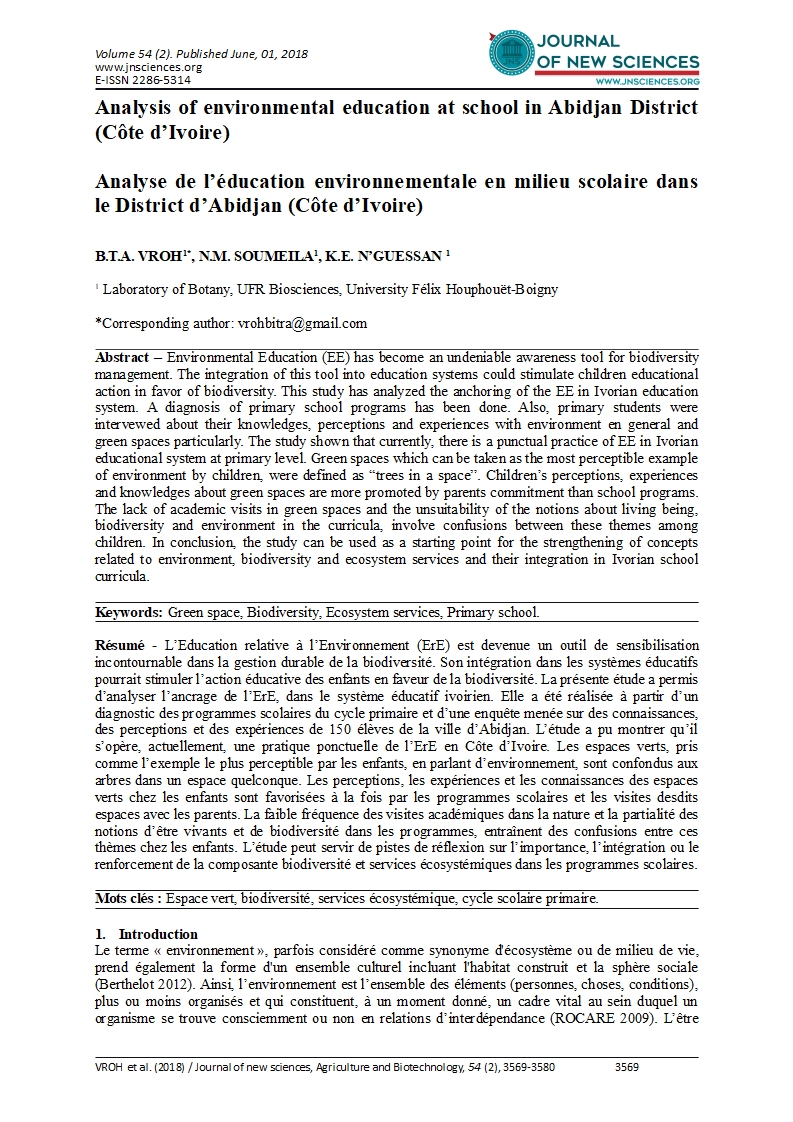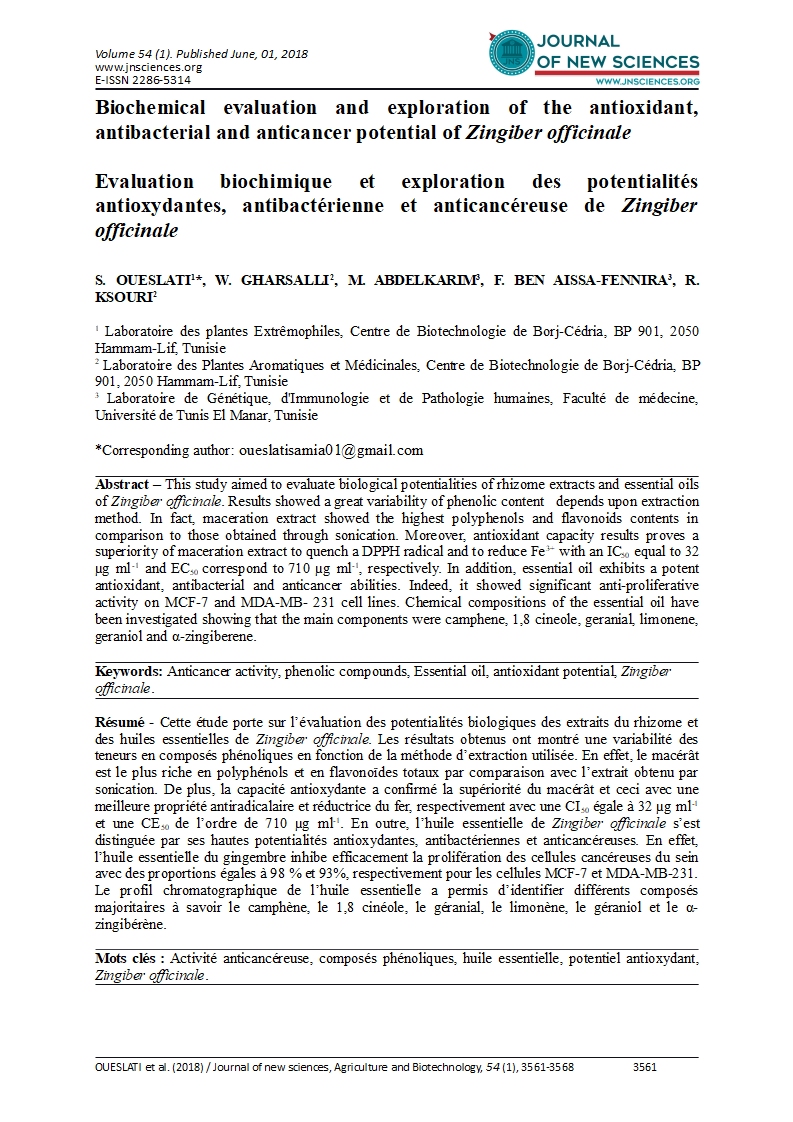- Category: Volume 54
- Hits: 6589
Effect of eco-extraction on polyphenols contents and antioxidant activity of Lepidium sativum seeds

Effet de l’Eco-extraction sur les teneurs en polyphenols et l’activité antioxydante des grains de Lepidium sativum
F. MEDINI1*
M. BEN HAMIDA1
A. ATWI1
R. KSOURI1
1 Aromatic and Medinicinal Plant Laboratory, Biotechnology center of Borj cedria, BP 901, 2050 Hammam-Lif, Tunisia.
Abstract – Aromatic and medicinal plants are always an inexhaustible source of active ingredients. Our study was carried out on the seeds of Lepidium sativum. This plant is traditionally well known for its therapeutic virtues. The seeds were ground into a fine powder and then subjected to two types of extraction: maceration at room temperature and microwave-assisted extraction. Solvents used in both techniques: water, pure ethanol and ethanol / water mixtures (20, 50 and 80%). The various extracts obtained were assayed for their contents of total polyphenols, flavonoids and tannins condensed by spectrophotometric methods. Then, they were evaluated for their antioxidant powers using total antioxidant activity, the DPPH test and the reducing power of iron. The results showed that the maceration with the aqueous extract had the highest total polyphenol content (13.8 mgEAG / gMS). However, the use of the microwave as an unconventional extraction medium extracted the highest levels of flavonoids and condensed tannins. The ethanol extract (50%) is the richest of flavonoids (2.9 mgEC / gMS) and the ethanol (20%) extract is the richest in condensed tannins (1.9 mgEC / gMS). For antioxidant activities, ethanol macerate (20%) exhibited the highest total antioxidant activity (11.80 mgEAG / gMS) and pure ethanol macerate had the best ability to trap DPPH free radicals. with an IC50 of 14.5 μg / ml and to reduce ferric ions with an IC50 of 500 μg / ml.
Keywords: Lepidium sativum, seeds, phenolic compounds, extraction techniques, antioxidant activity.



